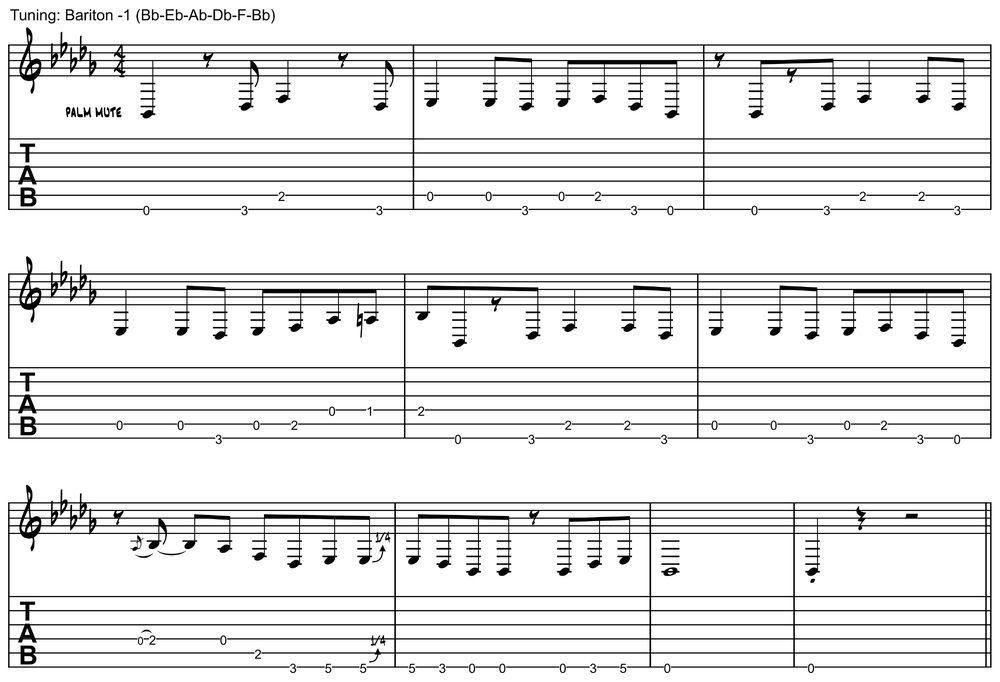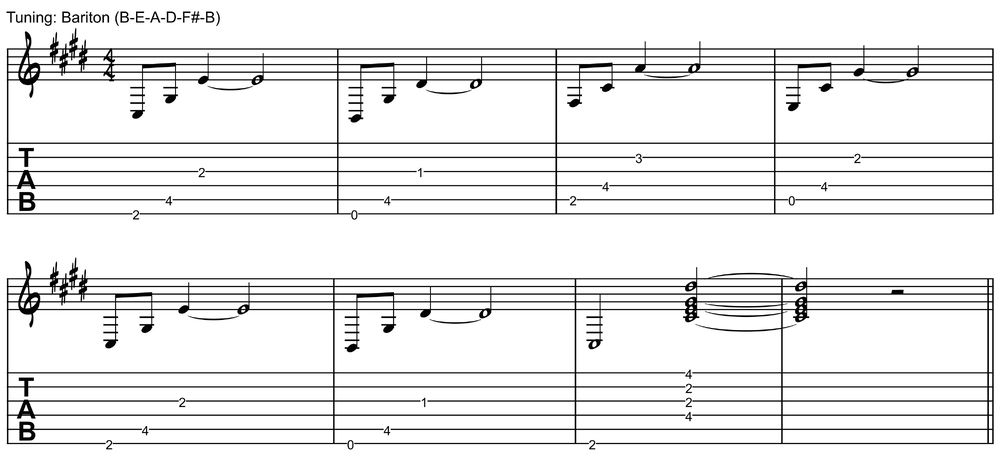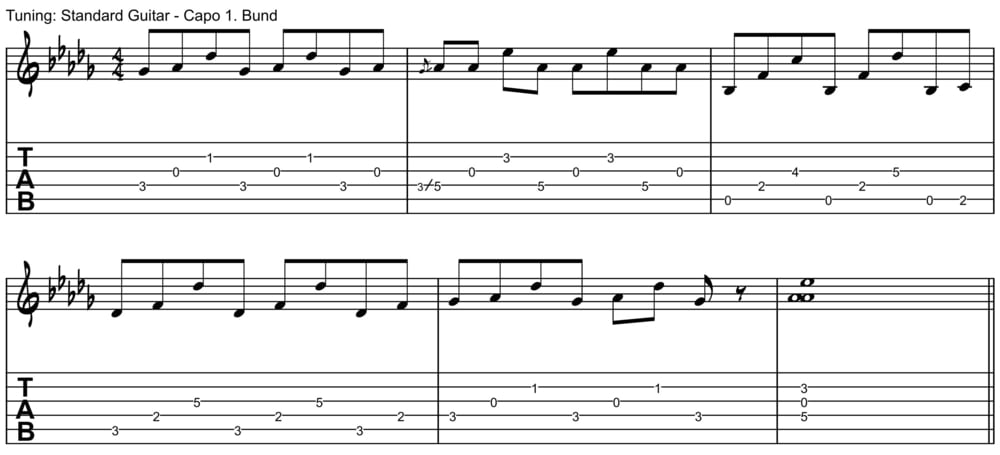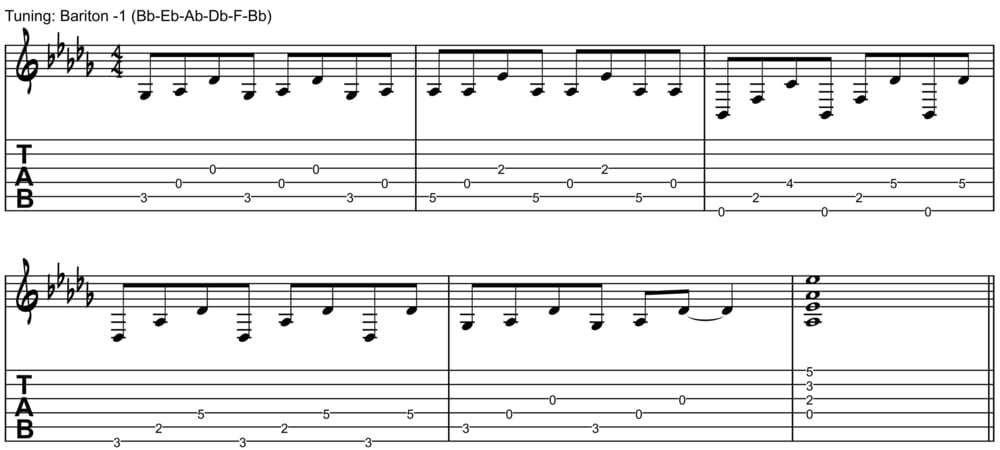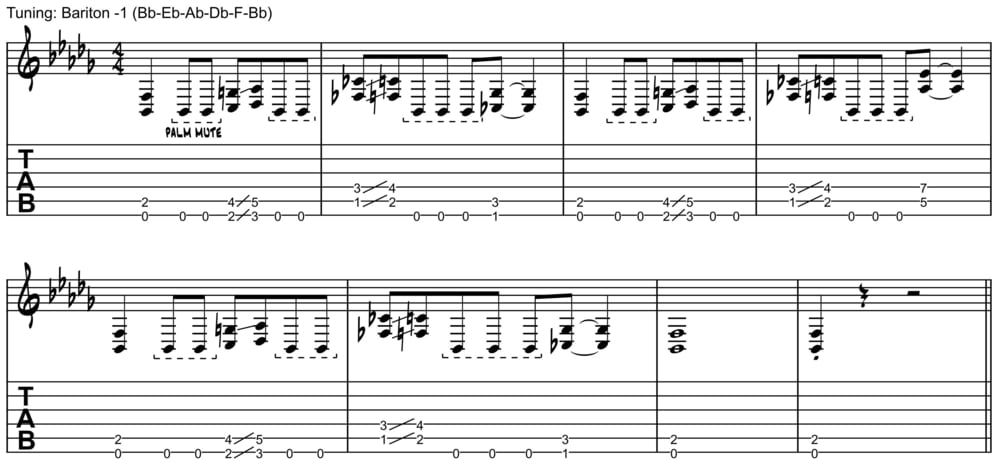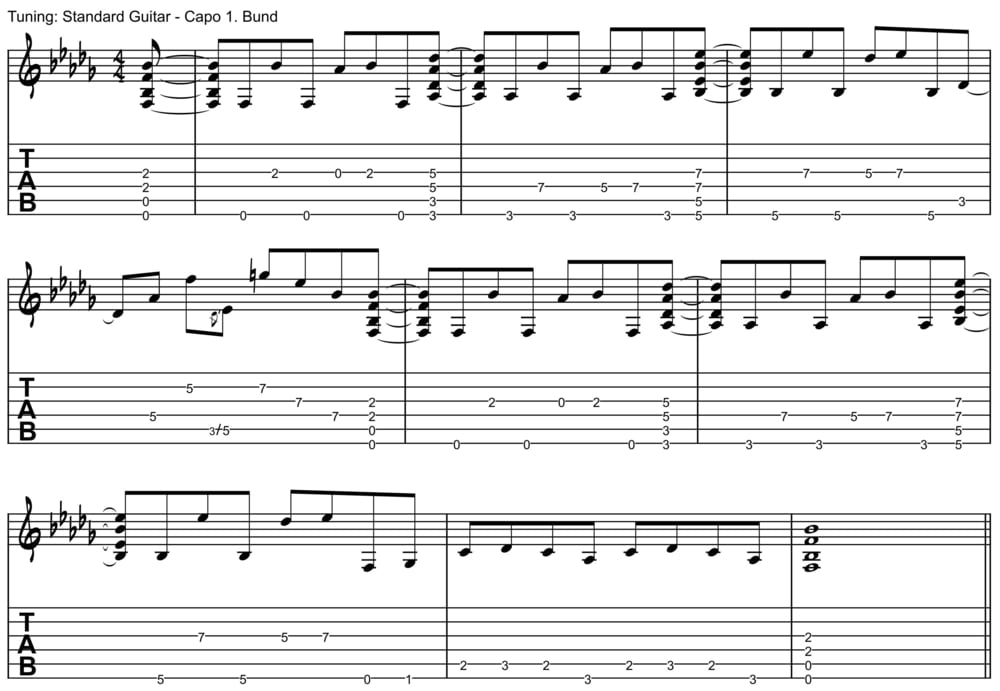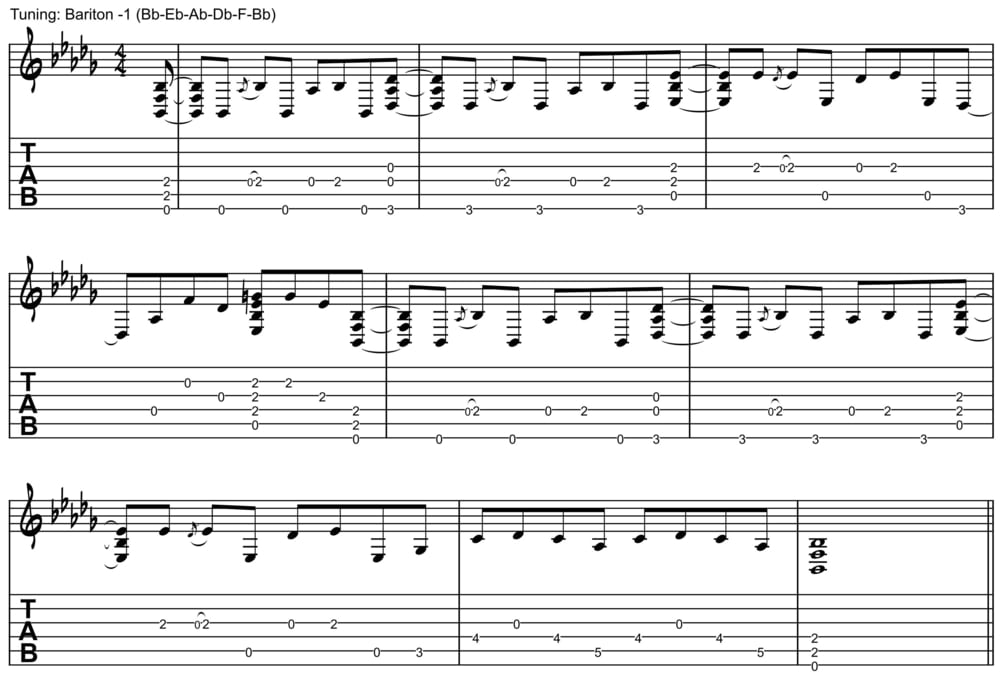6. Sound samples
Sound samples
The following sound samples are played on a Fender Telecaster Baritone, i.e. a classic single coil guitar, and a Music Man John Petrucci Baritone, the contemporary version with humbuckers. These two baritone guitars should give a fairly comprehensive overview of the wide range of sounds you can produce on the various instruments in this class.
Every now and then, you'll also hear "normal" guitars in our audio files - they are a Telecaster and a Tom Anderson Strat with humbucker on the bridge. Our amps are a Fender Deluxe (clean) and a Randall head (distorted). All sound samples are recorded with a Shure SM57 and a Sontronics Halo and sent to an Avid HDi/o through a Tube-Tech pre-amp.
Let's start with typical baritone sounds.
In the first sample, the deep Tele sounds through the Fender amp, there's a good measure of spring reverb, and compression lends saturation.
Most of you will have heard something like this, and maybe you've asked yourself how you can achieve this characteristic sound. Voilà!
And now for another classic - this time with a tremolo pedal.
Here, the amp is driven into saturation; thus, the sound is compressed and results in a woolly, vintage sound.
We'll stick with the baritone Tele and show you a typical studio scenario, where it is paired with a standard-tuned Telecaster
First, the standard Tele, then its deeper counterpart.
And now, the two together:
Fundamentally, this sounds like a twelve-string e-guitar, with the difference that in playing the two you can adjust or even automate the relative volumes.
In our sample, the verse is played with the baritone, the octave joins it in the bridge, thus opening the the chorus to the higher ranges.
But how about adding a chorus and delay to the high guitar while keeping the deeper one pure?
Not too shabby, is it?
In the following sample, the higher guitar is unaltered, but the lower features a phaser.
This is a variation rarely used in real life, but as we keep saying: there's no limit to your creativity.
Now we'll leave the realms of clarity and turn to modern techniques and sounds. Time to hook up the Randall amp to the Music Man baritone.
And it sounds just as you'd expect: deep, fat, badass. The amp distortion is set to half, by the way, but it sounds far more distorted than that.
The combo of standard and baritone guitar remains attractive in distortion, too. Here's the riff, played first on the normal Tele:
The riff on the Music Man:
This is how the two sound together:
This is how to make a riff grand! Telecaster guitars are very popular in the heavy scene, by the way - usually in combination with a humbucker guitar - simply because they possess good attack and are a perfect complement to the usually fat sound of double-coilers.
Finally, a short band track to illustrate the use of a baritone guitar with a normal modern Strat.
In the first half, the standard-tuned guitar plays the main riff, and in the second half the baritone Music Man joins it. Both guitars are recorded on one stereo track each.


